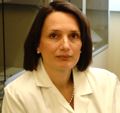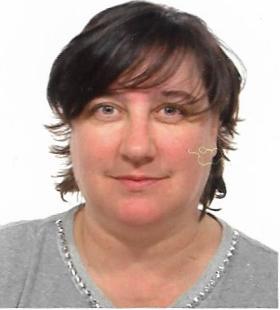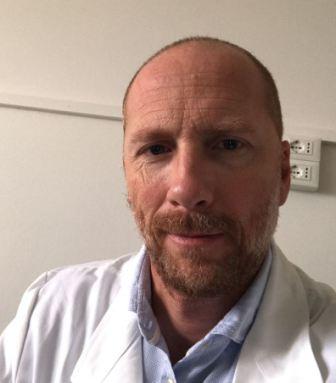Studiare
In questa sezione è possibile reperire le informazioni riguardanti l'organizzazione pratica del corso, lo svolgimento delle attività didattiche, le opportunità formative e i contatti utili durante tutto il percorso di studi, fino al conseguimento del titolo finale.
Calendario accademico
Il calendario accademico riporta le scadenze, gli adempimenti e i periodi rilevanti per la componente studentesca, personale docente e personale dell'Università. Sono inoltre indicate le festività e le chiusure ufficiali dell'Ateneo.
L’anno accademico inizia il 1° ottobre e termina il 30 settembre dell'anno successivo.
Calendario didattico
Il calendario didattico indica i periodi di svolgimento delle attività formative, di sessioni d'esami, di laurea e di chiusura per le festività.
| Periodo | Dal | Al |
|---|---|---|
| 1° ANNO 1° Semestre | 3-ott-2016 | 31-dic-2016 |
| 2° ANNO 1° Semestre | 3-ott-2016 | 31-dic-2016 |
| 3° ANNO 1° Semestre | 3-ott-2016 | 31-dic-2016 |
| 1° ANNO 2° Semestre | 1-feb-2017 | 30-mag-2017 |
| 2° ANNO 2° Semestre | 1-feb-2017 | 31-mag-2017 |
| 3° ANNO 2° Semestre | 1-feb-2017 | 31-mag-2017 |
Calendario esami
Gli appelli d'esame sono gestiti dalla Unità Operativa Segreteria Corsi di Studio Medicina.
Per consultazione e iscrizione agli appelli d'esame visita il sistema ESSE3.
Per problemi inerenti allo smarrimento della password di accesso ai servizi on-line si prega di rivolgersi al supporto informatico della Scuola o al servizio recupero credenziali
Per dubbi o domande leggi le risposte alle domande più frequenti F.A.Q. Iscrizione Esami
Docenti
 renzo.antolini@unitn.it
renzo.antolini@unitn.it
 borghesi.a@mail.apss.tn.it
borghesi.a@mail.apss.tn.it
 maurizio.grigiante@unitn.it
maurizio.grigiante@unitn.it
 rocco.micciolo@economia.unitn.it
rocco.micciolo@economia.unitn.it
 francesco.torre@apss.tn.it
francesco.torre@apss.tn.it
 cinzia.vivori@apss.tn.it
cinzia.vivori@apss.tn.it
Piano Didattico
Il piano didattico è l'elenco degli insegnamenti e delle altre attività formative che devono essere sostenute nel corso della propria carriera universitaria.
Selezionare il piano didattico in base all'anno accademico di iscrizione.
1° Anno
| Insegnamenti | Crediti | TAF | SSD |
|---|
2° Anno Attivato nell'A.A. 2017/2018
| Insegnamenti | Crediti | TAF | SSD |
|---|
3° Anno Attivato nell'A.A. 2018/2019
| Insegnamenti | Crediti | TAF | SSD |
|---|
| Insegnamenti | Crediti | TAF | SSD |
|---|
| Insegnamenti | Crediti | TAF | SSD |
|---|
| Insegnamenti | Crediti | TAF | SSD |
|---|
Legenda | Tipo Attività Formativa (TAF)
TAF (Tipologia Attività Formativa) Tutti gli insegnamenti e le attività sono classificate in diversi tipi di attività formativa, indicati da una lettera.
Prospettive
Avvisi degli insegnamenti e del corso di studio
Per la comunità studentesca
Se sei già iscritta/o a un corso di studio, puoi consultare tutti gli avvisi relativi al tuo corso di studi nella tua area riservata MyUnivr.
In questo portale potrai visualizzare informazioni, risorse e servizi utili che riguardano la tua carriera universitaria (libretto online, gestione della carriera Esse3, corsi e-learning, email istituzionale, modulistica di segreteria, procedure amministrative, ecc.).
Entra in MyUnivr con le tue credenziali GIA: solo così potrai ricevere notifica di tutti gli avvisi dei tuoi docenti e della tua segreteria via mail e a breve anche tramite l'app Univr.
Prova Finale
Per essere ammessi alla prova finale occorre avere conseguito tutti i crediti nelle attività formative previste dal piano degli studi, compresi quelli relativi all’attività di tirocinio. Alla preparazione della tesi sono assegnati 7 CFU. La prova è organizzata, con decreto del Ministro dell'Istruzione, dell'Università e della Ricerca di concerto con il Ministro del Lavoro, della Salute e delle Politiche Sociali, in due sessioni definite a livello nazionale. La prova finale, con valore di esame di Stato abilitante, si compone di:
- una prova pratica nel corso della quale lo studente deve dimostrare di aver acquisito le conoscenze e abilità teorico-pratiche e tecnico-operative proprie dello specifico profilo professionale;
- la redazione di un elaborato di tesi e sua discussione.
Si è ammessi alla discussione dell’elaborato di Tesi solo se si è superata positivamente la prova pratica. Lo studente avrà la supervisione di un docente del Corso di Laurea, detto Relatore, ed eventuali correlatori anche esterni al Corso di Laurea. Scopo della tesi è quello di impegnare lo studente in un lavoro di formalizzazione, progettazione e ricerca, che contribuisca sostanzialmente al completamento della sua formazione professionale e scientifica. Il contenuto della tesi deve essere inerente a tematiche o discipline strettamente correlate al profilo professionale. La valutazione della tesi sarà basata sui seguenti criteri: livello di approfondimento del lavoro svolto, contributo critico personale, accuratezza della metodologia adottata per lo sviluppo della tematica. Il punteggio finale di Laurea, espresso in cento/decimi con eventuale lode, è formato dalla media ponderata rapportata a 110 dei voti conseguiti negli esami di profitto, dalla somma delle valutazioni ottenute nella prova pratica (fino ad un massimo di 5 punti) e nella discussione della Tesi (fino ad un massimo di 6 punti). La commissione di Laurea potrà attribuire ulteriori punti anche in base a:
- presenza di eventuali lodi ottenute negli esami sostenuti;
- partecipazione ai programmi Erasmus fino a 2 punti aggiuntivi;
- laurea entro i termini della durata normale del corso 1 punti aggiuntivi.
È prevista la possibilità per lo studente di redigere l'elaborato in lingua inglese.
La scadenza per la presentazione della domanda di laurea e relativa documentazione, verrà indicata negli avvisi dello specifico Corso di laurea
Documenti
| Titolo | Info File |
|---|---|
|
|
pdf, it, 142 KB, 14/04/23 |
Gestione carriere
Orario Lezioni
Documenti
| Titolo | Info File |
|---|---|
|
|
pdf, it, 509 KB, 11/04/24 |
|
|
pdf, it, 499 KB, 11/04/24 |
|
|
pdf, it, 621 KB, 11/04/24 |
|
|
pdf, it, 1453 KB, 07/02/24 |

 045-8027102
045-8027102









